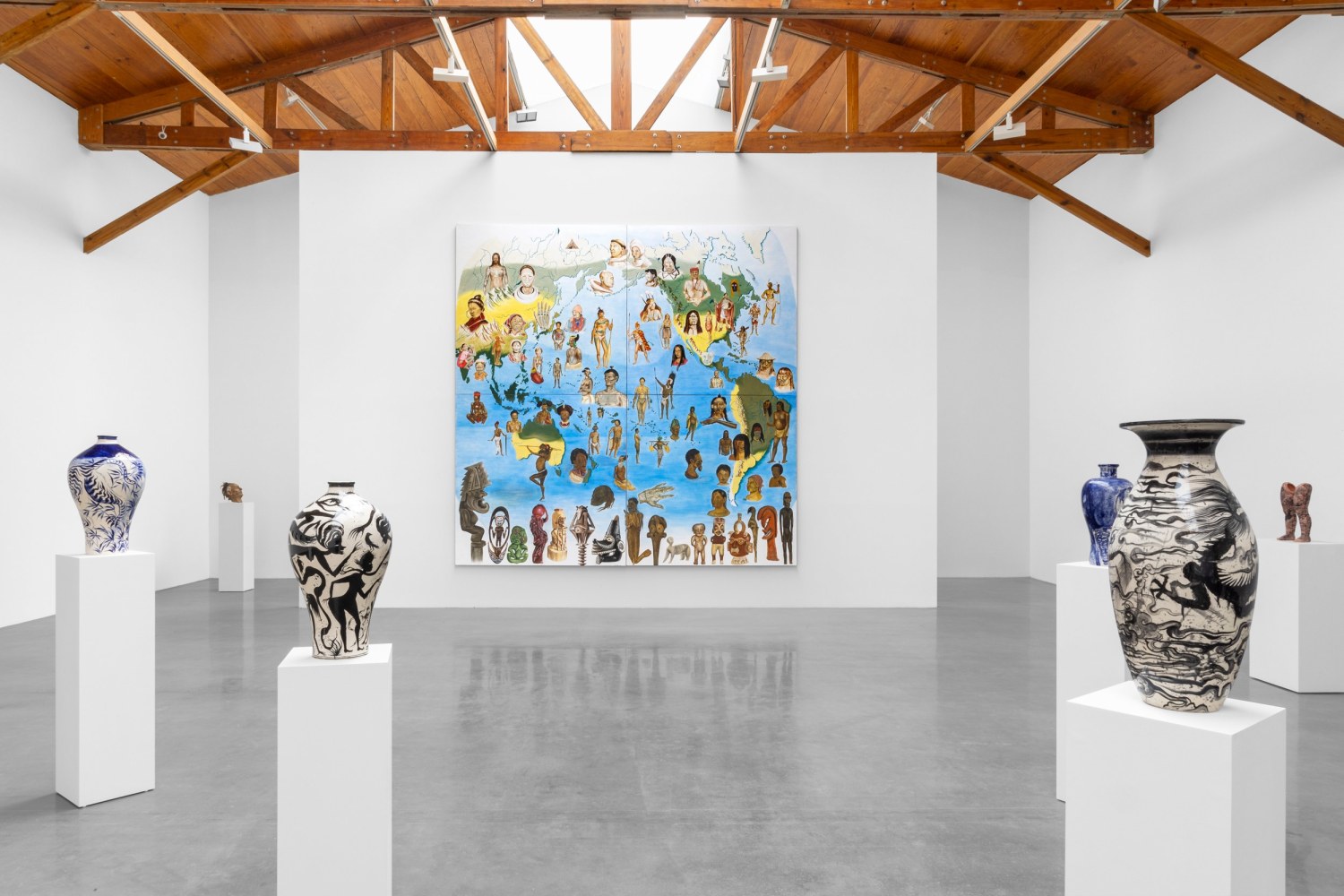
Dr. Lakra
Tupi or not tupi
Exhibition
-> Oct 26 2024 – Jan 11 2025
kurimanzutto presents Tupi or not tupi by Jerónimo López Ramírez, better known as Dr. Lakra.
The exhibition’s title, Tupi or not tupi, references a phrase from the Manifiesto Antropófago (Anthropophagous Manifesto, 1928) by Brazilian poet Oswald de Andrade. Written in the context of the artistic avant-garde in 1920s São Paulo, the question “tupi or not tupi” encapsulates the concept of anthropophagy that the manifesto proposes. It appropriates and transforms Shakespeare’s Hamlet with a nod to the Tupi, an indigenous South American tribe. Dr. Lakra’s works on view adopt a similar avant-garde anthropophagist approach: they take, devour, and appropriate diverse references and iconographies through a process of cultural digestion.
Drawing a connection to his 2015 solo exhibition at kurimanzutto, Mexico City, the artist presents new totemitos. These totemic sculptures combine effigies from African, Asian, and American cultures, and representations of religious iconography and objects from contemporary culture. Alongside these pieces, Lakra debuts a series of oil paintings that evoke the style of 16th-century Italian Renaissance painter Giuseppe Arcimboldo, known for his compositions of animals, flowers, fruits, and everyday objects arranged into imaginative portraits.
The central work of Tupi or not tupi is a 4 x 4 meter mural that occupies one of the gallery’s walls. Inspired by Mexican artist Miguel Covarrubias’s maps of the Pacific Ocean, created for the 1939 Golden Gate International Exhibition, Lakra offers his own rendition—a map tracing key tattoo routes across Asia, Australia, North America, and South America. Reflecting his deep fascination with tattoo culture, the exhibition features a preview of a documentary series that he has been developing for over twelve years, which explores Japanese tattooing from an anthropological perspective.
–kurimanzutto